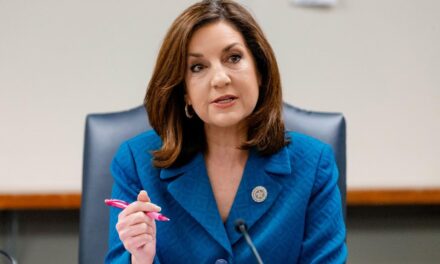
Why Sarah Palin isn’t the clear favorite to win the Alaska special election

(CNN)My columns are often about which candidates are most likely to win elections. But every so often, there are elections that are so difficult to handicap that I throw my hands up in frustration.
The upcoming US House special election in Alaska is one of those. Former GOP Gov. Sarah Palin is running for the state’s at-large seat left vacant by the death of longtime Republican Rep. Don Young, and I have no idea whether she is going to win or not.
To be clear, Palin starts out in an enviable position. The primary and general election are in two months (June) and four months (August) respectively. This leaves little time for most candidates to build name recognition and gives a well-known former governor a leg up on the competition.
Indeed, under most circumstances, Palin would probably be considered the clear favorite to win the primary and general election. Her primary challengers would have a tough time competing against a candidate sucking up most of the oxygen in the race, especially with former President Donald Trump endorsing her.
It would then be difficult to defeat Palin in the general election given Alaska’s red tilt — Trump won the state by 10 points in 2020 — and how unpopular Democratic President Joe Biden is at the moment.
A new election system
Alaska, though, isn’t conducting its elections like other states, and Palin isn’t like most former governors. Normally, voters cast ballots in partisan primaries, the top vote-getters advance to the general election under their party’s banner, and the candidate with the most votes wins the general election.
This year, Alaska is debuting a type of jungle primary (known as a top-four primary) to select candidates who advance to the general election. In layman’s terms, all the candidates, regardless of party affiliation, will run in the same primary with the top four vote-getters advancing to the general election, which will then be decided by ranked-choice voting.

Moreover, voters in the special election will also have to contend with more than 50 candidates — conservatives, moderates, liberals — appearing on the primary ballot.
It’s plausible for a candidate to make the general election ballot with a very low (i.e., less than 10%) or high (greater than 50%) percentage of the vote.
Given that Palin is fairly well-known, she likely initially benefits from the large field of candidates. All you need is a solid base of support to make the general election in a top-four primary system.
But Palin’s prominence also comes with the complication of her being the candidate most likely to be attacked. Conservative rivals will want to gain support from people who would be inclined to vote for her. Liberal candidates will go after her because they disagree with her politics.
In most election systems, a candidate like Palin, assuming she wins her party primary, would be able to recover from any primary barbs in the general election. Here, though, we’ll have four major candidates in the general election.
These could be candidates that go after Palin from the left and the right. We don’t know how many of each there will be.
Will there be two Republicans in the general elections? Will there be three? Will all four candidates be Republicans? Maybe only one of them will be a Republican.
General election complications
Under the ranked-choice voting system in the general election, voters can rank their favorite candidates in order of preference. If no candidate receives a majority of first-choice votes, the candidate with the least first-place votes is eliminated and their ballots reallocated to their voters’ second choice. If no one has a majority then, then the candidate with the fewest votes after round two will have their voters’ ballots reallocated. The candidate with the most votes after round three would be declared the winner.

If Palin is the lone Republican against a Democrat after two rounds of vote reallocations, she’s probably the clear favorite because of how Republican Alaska is.
Palin could, however, be going up against a more moderate Republican in the final round. That could prove difficult for her. Democrats, moderate Republicans and moderate independents may team up to oppose her.
Additionally, the alliances during the different vote reallocation rounds could mean that Palin might not even make the final round.
We already saw how ranked-choice voting in New York City’s Democratic mayoral primary last year led to the candidate initially in third place nearly overtaking the initial first-place candidate.
Twelve years ago, under different circumstances, Alaska voters reelected moderate Republican Sen. Lisa Murkowski as a write-in candidate in the general election after she had lost the GOP primary to a more conservative challenger. Murkowski was able to do so because a lot of Democrats rallied to her side.
The top-four election system at least makes the possibility of a more moderate Republican winning plausible.
But perhaps the biggest unknown in this race is how Alaskans will react to Palin. She last won an election in the state back in 2006 (or 2008, depending on whether you count her appearance on that year’s GOP presidential ticket). The longest-serving incumbent governor in the country today (Democrat Jay Inslee of Washington state) was first elected to the governorship in 2012.
A lot has changed since the time Palin last won in Alaska. She became a nationally known figure after John McCain picked her as his vice presidential nominee in 2008. She also became a Fox personality.
Of course, you could make the argument that the shift toward a more populist GOP would only help Palin. But the lack of a partisan primary complicates her general election chances.
We’ll see if the former governor has what it takes to win what could be her first statewide election in about 15 years.
Source: https://www.cnn.com/2022/04/06/politics/sarah-palin-alaska-special-election/index.html

















